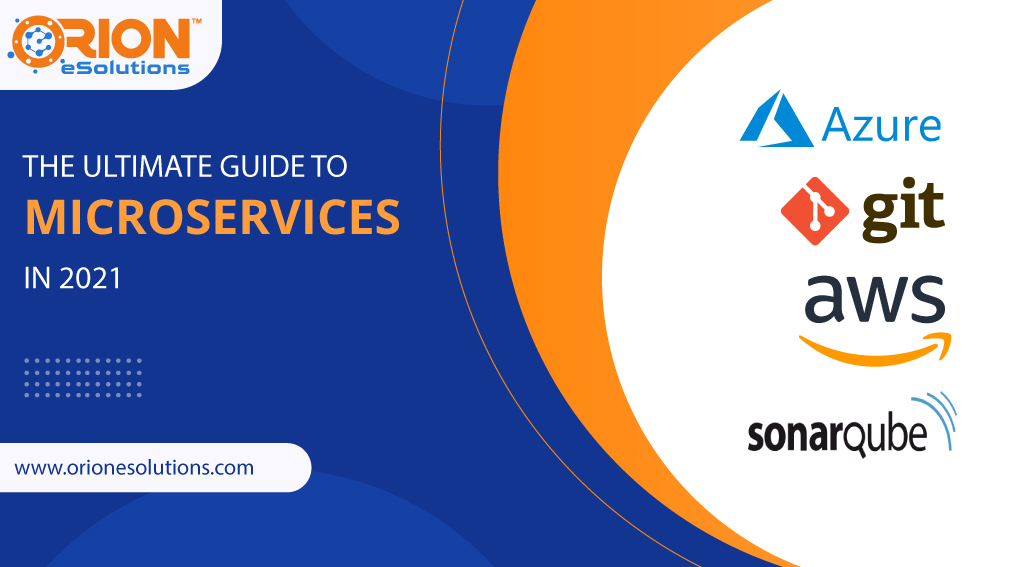Microservices is a refined application paradigm. It is known to yield functionalities as discrete services that are lightweight. It also follows a well-fashioned API. Broadly reflecting, the evolution and considerable advancements of tech such as IoT, big data, and, cloud has brought about this new boom. Microservices can very well be described as a harbinger related to the API economy.
In this Ultimate Guide to Microservices, we will be discussing the necessity, the growth, the benefits, and the future implications of this technology. But first, let us underpin our trust in the tech through some numbers.
According to Allied Market Research,
- The market value of Microservices Architecture was at $2073 Million in 2018.
- In the forecast period of 2019 to 2026, the market is expected to exhibit a CAGR of 18.6%.
- By 2026, the marker value is expected to exceed $8073 Million.
Similarly, the API management market is also expecting a well-deserved boom by 2023. According to Markets and Markets,
- The API management market was at $1.2 Billion in 2018.
- By 2023, the market will reach a valuation of $5.1 Billion.
- The CAGR expected too be exhibited by the market from 2018 to 2023 is 32.9%.
The historical emphasis on monolithic architectures like ERP, HCM, and CRM is seeing a decline. Microservice architecture appreciates stability around a core set of services. This in turn allows engaging the consumer community, influence functionality, and support better business decisions and directions. Faster development cycles and better scalability are fueling the frenzied adoption.
Let us dive a little deeper into the benefits of microservices architecture.
Benefits Of Using A Microservice Architecture
-
Limitless Integrations
Localization and personalization along with other necessities are prioritized by enterprises. This happens through integrating the CMS with extensions. Such large-scale integrations cannot be handled if the platform is not specifically made for it. However, through microservices, performance remains uncompromised.
-
Better Scalability
Scaling microservices modules are relatively easier. This is because the modules are not glued together and instead work in API formats. This promises continuous uptime with zero performance issues when it comes to services crucial for businesses.
-
Flexibility
Flexibility plays an important part in outpacing competition. Through microservices, teams can work in sync to upgrade and push revolutionary experiences for your users, thus leaving the competition in dust.
-
Better Productivity and Speed
Microservices segments applications into discrete and manageable services that are easier and quicker to develop. Quality assurance can also be sped up through this by testing components while simultaneously working on subsequent ones.
Thus, it is evident that modularization is the future. The conclusion is clear. If it is a large project, adopt a microservice architecture. If you need quick delivery, adopt a microservice architecture. If you need autonomous delivery, adopt a microservice architecture. If you plan to scale your solution, adopt a microservice architecture. And if you need to frequently update separate parts, adopt a microservice architecture.
Now the question arises; How?
How do you implement a microservice architecture and juice out its full potential? Well, we got you covered. Let us list 5 steps to guide yourself before adopting a microservice architecture.
How To Adopt Microservices To Your Stack
- Make sure microservices are the right fit for your requirements, capacities, and vision. Subsequently, invest in long term support, development, and training for microservices.
- Define your goals. If your redefined goal echoes the necessity for a modular architecture, slowly replace all the components of your monolith over time.
- Go headless. Adopt a CMS platform with a headless architecture. It can simplify your implementation.
- Follow Agile. Foster a culture of constant communication and convincing collaboration amongst the team. This reduces siloes and renders a smoother flow to your projects.
- Schedule it out properly. Proper maintenance and documentation schedules are important for a robust microservice architecture.
The above discussion pans the benefits, the market insights, and the essential steps to consider a microservice architecture for your organization. And like every good partner, we want to conclude by saying we can take up the entire microservice architecture implementation, integration, or innovation for you. Let us sum up on that note.
Conclusion
Introducing microservices is not a simple task. If not done properly, you might be left with a tangled entity that refuses to straighten out. This is why you require a trustworthy partner like Orion eSolutions to sort out your microservice necessities. We use tools such as Kubernetes, Docker, Jenkins, Ansible, AWS, Azure, Keycloak, Terraform, Sonarqube, and GIT to make the collaboration as seamless and as meaningful as possible.
All the tools that we profess are showing great potential and promise for independent deployment in 2021.
- RedHat has assessed Kubernetes to have an 88% customer adoption.
- According to Mordor Intelligence, Docker has over5 Million applications placed in their containers.
- Jenkin has a market share of 71% and Ansible enjoys63%.
- According to ParkMyCloud, AWS enjoys 32% market share while Azure is at 19%.
Besides the basics, we can also handle complex nuances and tasks for you. Partner with Orion eSolutions today to satisfy all your microservices architecture needs like like data integrity, regional databases, and latencies to migration, integration, and initial deployment.









